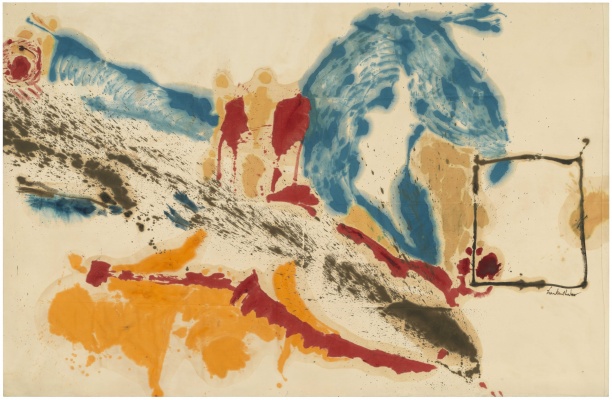Descripción de la Exposición
Cecilia Brunson Projects (CBP) presents an exhibition by the Guatemalan artist Sandra Monterroso, her first solo show in the UK. Born during Guatemala's three-decade civil war, Monterroso (b.1974) has developed a socially and politically motivated practice in which she strives to restore her cultural and ancestral heritage as a Mayan artist.
By the end of Guatemala's civil war in 1996, Monterroso turned to video performances to illustrate the tension between indigenous and colonial culture. Monterroso said that for her “performance is the space of rituals” – a practice which allows her to bring a forgotten historical experience into a contemporary form. In her performative works such as Meditando El Error (2008) and Colorando y Decolorando las Hebras (2011), Monterroso makes her art an act of resistance, questioning colonialism and the treatment of indigenous women.
Developing these ideas from her early performative works, Monterroso produced a number of sculptures, installations and works on paper which centred around Mayan cultural practices and textiles. This exhibition of Monterroso’s work is taken from this selection, showcasing the traditional Mayan plant dyeing and weaving techniques that form the basis of her work.
The centrepiece of this exhibition is Expoliada II (2016), a large installation of three hanging rows of vibrant yellow thread. Throughout her practice, Monterroso uses colour according to Mayan cosmology: black represents West, white is associated with the North, red is the East, and yellow represents the South. By expressing her own identity through Mayan symbolism, Monterroso replaces the erased Mayan cosmology and history in Guatemala. Alongside Expoliada II, Monterroso created the video diptych Colorando y Decolorando las Hebras (2011). In this two-part performative action, Monterroso is first seen in an art gallery, bent over her steel pot where she is dying threads yellow using traditional Mayan techniques. Later, she is on the bank of the river in Guatemala, scrubbing the yellow threads clean with the fresh water. The two scenes – and Monterroso’s impossible attempt to wash the yellow dye off the threads in the river - represent the way in which our identity and cultural history are an irreversible parts of ourselves.
In the Tejido (2020), Composiciones Acuáticas (2019), and Efectos Cruzados (2020) series, Monterroso uses a blue Mayan plant dye, indigofera guatemalensis. This dye is made by combining a clay mineral, palygorskite, with the pigment from the native Central and South American indigo plant, indigofera suffructiosa. Since 300AD, Mayans have used the dye to decorate their bodies as part of the ritual to Chaac, the rain deity. Monterroso uses traditional techniques to make her own dye; fermenting the indigo plant and extracting the distilled pigment from its leaves.
The indigofera suffructiosa plant was also cultivated and exported by Spanish colonists. Deemed to be sacred because of its colour, the dye became a valuable commodity that played a role in the transatlantic trade routes that violently shaped the 16th century global landscape.
In her Composiciones acuáticas series, Monterroso covers the paper with a fabric soaked in indigofera guatemalensis. This technique allows the pigment to stain the paper naturally, creating geometric and marbled forms that are unique to each work. For Efectos Cruzados, she contorts strands of thread around two wooden paddles, before submerging them into a pot of hot water mixed with indigo dye.
The twisted and stained fabrics, marked and shaped by Monterroso’s tools, reflect the intricate and torturous relationships in Guatemala between the political, the indigenous and the colonial. In Volviendo al Punto de Partida (2012), Monterroso twists and stains tocoyals – traditional female Mayan hair wraps – into two knotted packages. Accompanied by two knives engraved with “Tra(d)iciones [tra(d)itions]” and “Es mas fácil cortarlo que desatarlo [It is easier to cut it than to untie it]”, this work symbolises the tocoyals found in the mass graves of the Guatemalan genocide (1981–1983) and criticizes violence as a way to solve historical or political relationships.
Building on this, the eight-metre long La otra línea histórica, cara o cruz (2017) is made from small tufts of black feathers, achiote-stained blankets and pennies showing the face of Fray Bartolomé de las Casas, a Spanish Crown cleric, and Guatemala’s national coat of arms. Using the same feathers from her 2014 performance, La Devolución del Penacho de Vucub Caquix, that references Moctezuma’s headdress, La otra línea histórica, cara o cruz addresses the long-standing pan-indigenous concerns about independence, cultural appropriation and sovereignty.
Her work brings deep-rooted indigenous culture and belief out of the margins and into the contemporary art canon. Exploring her ancestry and the boundaries of her mestizo identity through physical references to tradition and memory, Monterroso underlines that Mayan culture, Mayan community and Mayan practice exist today.

Premio. 25 mar de 2025 - 08 may de 2025 / Madrid, España

Exposición. 11 abr de 2025 - 28 sep de 2025 / Museo Guggenheim Bilbao / Bilbao, Vizcaya, España

Formación. 08 may de 2025 - 17 may de 2025 / Museo Nacional Centro de Arte Reina Sofía (MNCARS) / Madrid, España